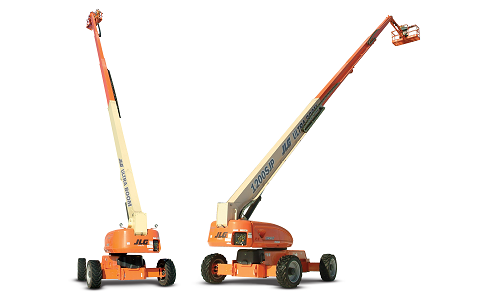Rental Company Near Me: Local Solutions for Equipment Rentals
Rental Company Near Me: Local Solutions for Equipment Rentals
Blog Article
Optimize Your Budget by Recognizing the Expenses Connected With Building Devices Rentals
Understanding the complete range of prices connected with construction equipment rentals is essential for maximizing your spending plan. What approaches can be employed to efficiently take care of these prices and make certain a much more efficient rental experience?
Overview of Rental Expenses
When taking into consideration building devices rentals, recognizing the connected costs is paramount for reliable budgeting and job preparation. Rental prices can differ substantially based upon a number of variables, consisting of devices type, period of leasing, and place. The initial rental charge often reflects the tools's market need and its associated functional capacities, affecting the total cost.
Along with the base rental price, secondary prices might develop, such as transportation charges, fuel additional charges, and maintenance costs. It is vital to make up these extra expenditures to properly evaluate the complete price of renting out equipment. In addition, the rental period can impact rates; longer rentals might get approved for affordable prices, while short-term services could sustain greater everyday costs.

Breakdown of Rental Prices
A detailed understanding of rental prices is vital for professionals and job supervisors intending to maximize their budget plans. Rental rates for building devices typically include a number of parts, consisting of base rates, time-based fees, and use costs.
Base rates are the core fees related to the rental of the equipment, commonly determined by the kind and dimension of the machinery. These prices can differ substantially, influenced by aspects such as tools demand, availability, and local market trends. Time-based costs, which may be daily, weekly, or monthly, offer to fit different job timelines and rental periods.
In addition, rental rates might consist of usage costs, which apply when tools is made use of past a specified threshold, guaranteeing that the rental business can account for wear and tear. Seasonal need variations can likewise impact rental rates, with peak building periods typically commanding greater prices.
Additionally, comprehending the rental firm's policies relating to upkeep and insurance coverage can offer further understanding into the overall expense framework. By assessing these parts, service providers can make informed decisions, making certain the selection of rental equipment straightens with both project demands and budget plan restraints.
Added Costs to Take Into Consideration
Recognizing the details of added charges is important for professionals to manage their total leasing expenses successfully. Past the standard rental rates, various auxiliary costs can substantially affect the overall expense of tools leasing. These fees typically consist of shipment and pickup costs, which can differ based upon range and logistics associated with transferring the devices to and from the job website.
Moreover, some rental firms may impose fuel additional charges if the equipment is returned with less fuel than when leased. It is additionally vital to know prospective cleansing fees, particularly for specialized tools that requires complete upkeep after usage.

Completely reviewing the rental agreement and making clear these added costs in advance can help contractors stay clear of unexpected prices and guarantee that spending plans continue to be intact throughout the job lifecycle.
Repair And Maintenance Expenses
Regular upkeep and repair expenses are frequently overlooked elements that can dramatically influence the overall expense of building and construction equipment leasings. When renting out devices, it is essential to think about not over here just the rental fees however likewise the potential costs related to keeping the equipment in ideal operating problem.
Several rental business include basic maintenance as component of the rental contract; however, much more unforeseen breakdowns or comprehensive repairs can result in extra expenses. It's necessary to evaluate the rental contract very carefully to recognize what maintenance solutions are covered and what obligations fall on the renter.
Additionally, this contact form tools that is not properly maintained can result in inadequacies on the work site, potentially triggering delays and raising task costs. To minimize these threats, it is a good idea to conduct regular evaluations and maintain open communication with the rental copyright relating to any kind of issues that occur during usage.
Insurance and Obligation Prices
Insurance coverage and obligation expenses are important elements that can significantly impact the overall expense of building tools rentals (boom lift rental). These expenses make certain that both the rental firm and the customer are secured from potential monetary losses arising from mishaps, damages, or theft throughout the rental duration

In addition, customers ought to know any kind of deductibles or exemptions in the insurance plan, as these can affect possible out-of-pocket expenditures. Comprehending the conditions of any insurance coverage is important to prevent unanticipated expenses. Ultimately, budgeting for insurance and responsibility costs can aid ensure a smoother rental experience and safeguard against financial threats related to building and construction jobs.
Conclusion
In verdict, a comprehensive understanding of the prices connected with building and construction devices leasings is essential for efficient budget plan management. Ultimately, educated decision-making regarding tools rentals adds to the overall success of construction endeavors.
Rental costs can differ substantially based on a number of aspects, consisting of equipment type, period of leasing, and area (equipment rental company). The rental period can impact rates; longer services may qualify for reduced rates, while short-term rentals may sustain greater day-to-day fees
By carrying out extensive research and involving with trusted rental firms, service providers can efficiently browse the intricacies of rental rates, inevitably optimizing their financial sources.
Past the basic rental prices, numerous supplemental costs can significantly impact the complete expense of devices service. Rental companies commonly supply obligation insurance coverage that covers injuries to third parties or damages to residential property, while devices damages insurance can cover the expense of repair work or replacement useful site if the leased tools is harmed.
Report this page